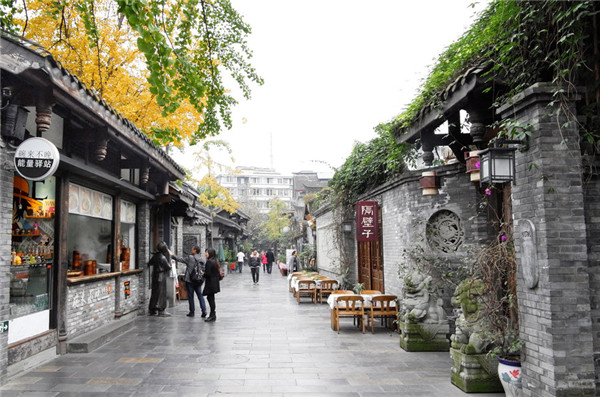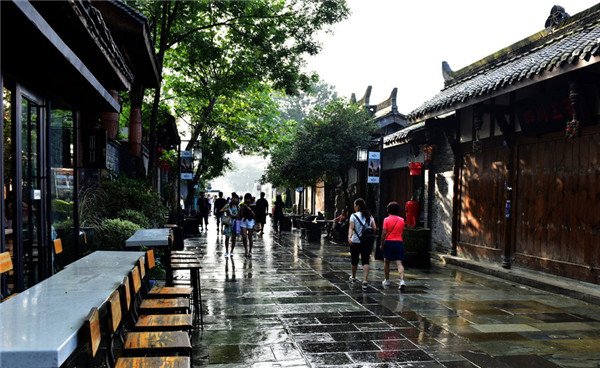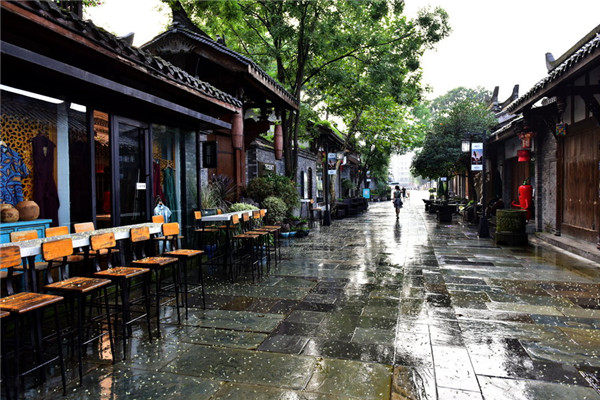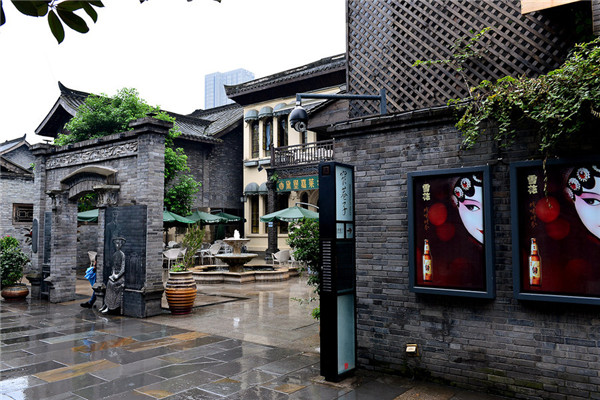Broad and Narrow Alley
| Broad and Narrow Alley Being in the list of Chengdu Historical and Cultural Protection Project, Broad and Narrow Alley is composed of broad alley, narrow alley and across alleys, among which, there are a lot of traditional courtyards, or Siheyuan.
Some very old alleys in Chengdu where some important people had lived. After its reconstruction, the Broad and Narrow Alley has been reopened to pubic and is one of the hottest tourist destination in Chengdu now. According to documents, Officers lived in those broad alleys, while the Eight Flag members lived in a narrow alley that was parallel to the broad one. The courtyards among the alleys were developed pretty well with the development of the Qing Dynasty. However, the alleys were constructed into western-styled architectures at the late Qing Dynasty; and during the period of the Republic of China the owners of the courtyards were changed into some noble families, and ever since then, the structure of the alleys remained till now. Because they were so unnoticeable. They were not on reachable transportation lines either. We can say that this area is the forgotten area of the city construction. The imperial city has disappeared; city walls have been destroyed; most of the city architectures are vanishing too; nowadays, Broad and Narrow Alley seems to be carrying the responsibility that it shouldn't carry. Broad and Narrow Alley is the last remaining part of the old Chengdu. The discovery of the alley made people realize the value of it. In 2003, reconstruction was started and the alley was gradually opened to the public.
The dispute about the reconstruction was pretty severe. In 2005, a dramatic scene can be seen along the street: some artist sit around, drinking tea and talking, while right beside them was the loud machine working for the reconstruction. How to reconstruct it? There were two ways. One was to emphasize on its protection by the government, but the government couldn't afford it; the other was all about business, but the protection of the alley could not be fulfilled. There's got to be a way in between, which was to balance the residence area and business area. At the beginning, people thought about imitating Shanghai’s style; however, this idea was denied because the structures of the two cities are completely different. Shanghai has more western architecture while Chengdu only has traditional layout, which didn't have the qualification to be like Shanghai. Therefore, the protection to the origin style of architectures idea was passed. The layout, style of architectures had to be remained, and all the construction material had to be traditional. To balance the residence and business area, a lot of people had to move out. After the reconstruction, there were only 100 households that remained. Those who remained here can be divided into 3 kinds of people: the rich, departments that belonged to the government and those who really had strong feelings about this alley. Translated by Ellen. |





